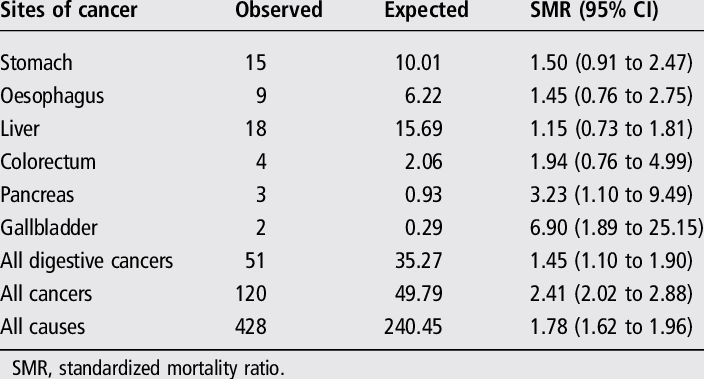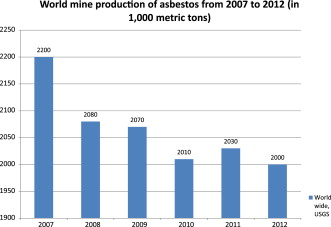Production of Asbestos is one of the most controversial natural resource extractions due to its impact on humans, as the material is widely considered as a toxin. Since the asbestos controversy from the late 1980s to the 1990s, most industrialized countries have banned asbestos. However, there are still countries that run asbestos mines and produce the raw material and the final product using asbestos. While the health effect of producing and using asbestos is widely known, we no longer see a transnational movement or the consumer awareness campaigns to ban asbestos worldwide since the 1990s, despite there are a number of Asbestos mines and mine workers present in developing countries. In my op-ed, I explore the toxicity of asbestos and the human impact of asbestos extraction around the world.
Human impact of the Global Extraction of toxins: Disproportionate Effects and the Regulation of Asbestos
“The World Health Organization (WHO) estimates 125 million people around the world are exposed annually to asbestos in the workplace, and the International Labour Organization says more than 107,000 workers die each year from a related disease. In addition, several thousand people die from asbestos in the environment each year.” (Cited in WHO (2010), ILO (2014), World Mesothelioma Center: https://www.asbestos.com/mesothelioma/worldwide/)

Asbestos exposure causes cancer. When the Environmental Protection Agency (in the United States) tried to ban asbestos in 1989, they were sued by the asbestos industry. In 1991 the U.S. supreme court reversed the ban, and since then, the EPA has not banned any other chemicals under TSCA. However, Canada still produces asbestos (or until very recently did), much of which gets exported to developing countries where environmental laws are weak or non-existent.
When it comes to regulating toxin substances, the decision to regulate will depend on the dynamics between science, economic, and political factors. Because imposing regulation would not always be determined a single issue but would be more likely to be an outcome of compromise or balance of three factors (despite having a clear scientific standpoint or substantial evidences on risks of a chemical), banning a chemical may not always follow what a chemist would suggest. Asbestos can serve as a good example of this case. Amphiboles, which is the class of asbestos, are found to be the principal culprits for including mesothelimo, a tumor found in the chest or gut.

In contrast to this potential risk of asbestos in the wide range of products, asbestos’ durability and flame-resistant features has been celebrated as an essential material under the name of technology and science for a long time. Likewise, the strength and resilience of asbestos makes the material appealing for a wide range of industrial application, but these same characteristics pose serious risks to human health as asbestos fibers can penetrate bodily tissue, particularly the lungs, causing tumors to develop.
While some would have considered asbestos as a valuable resource due to its seemingly versatile uses, the potential health danger questions whether the value of its extraction and industrial use exceeds such risk. While asbestos enjoys the industry’s support, there is another party who eagerly supports the continued use of asbestos whose job prospects would depend on the regulation of asbestos. Yet the long- term effect of Asbestos extraction will bring a disproportionate health impacts on mine-workers, mining communities, and consumers, especially in developing countries that still do not regulate the extraction and the use of Asbestos.
In addition to battle between scientific (health risk) and economic factors, there is another perspective comes in that makes the exit of asbestos even more difficult: clash of worldviews. Although the existing research discourages the use of asbestos, some advocate the continued use of asbestos based on lack of huge outbreak that would be statistically significant to ban asbestos.

How can we deal with this seemingly dangerous chemical yet many wishes to continue producing? First, as seen in many cases, industry-led research can be often flawed and biased, yet the results are published to defend their continued use of such substances. At the same time, ordinary citizens are also worried that government-led researches may publish the selective result to assuage the concerns of both industry and the public, resulting into very loose regulations. One possible solution could be that letting an independent, nonprofit organization to conduct such experiment to remove the rampant fallacies and dilemmas presented above. Another solution could be to support to find an alternative material that is economically viable, yet safe enough for human health to be extracted without much environmental impact and used without serious health risks.
Author: Jiyoung Michelle Han
Frank, Arthur & Joshi, T.K.. (2014). The Global Spread of Asbestos. Annals of Global Health. 80. 10.1016/j.aogh.2014.09.016.
ILO. 1988. Safety in the use of asbestos. Geneva: International Labour Office.
Mineral Commodity Summaries, January 2018, USGS (United State Geological Survey)
Soto, Antonio, and Gael Salazar. 2009. Asbestos: risks, environment and impact. New York: Nova Biomedical Books. http://public.eblib.com/choice/publicfullrecord.aspx?p=3019084
United States. 1991. Superfund record of decision: Atlas Asbestos Mine, CA : second remedial action – final. Washington, D.C.: U.S. Environmental Protection Agency, Office of Emergency and Remedial Response